John Hurrell – 31 March, 2024
There are the delicate, gently raised, approximately V-shaped, corrugated, six channelled formations with several different dimensions of liquid-conveying trough—their different widths and heights—and inside at their bottom edges, different residues of poured-on-to-then-pool rusty coloured residue. There is also the series of eleven cuttlefishbone-like forms (called Seed), each porcelain circle with sixteen radiating rippled segments traversed by faint incised lines and smudgy wispy glazes.
In Two Rooms’ narrow upstairs gallery, Wellington-based artist, Lauren Winstone, presents her understated stoneware and porcelain forms on a long thin shelf. There are two types.
There are the delicate, gently raised, approximately V-shaped, corrugated, six channelled formations with several different dimensions of liquid-conveying trough—their different widths and heights—and inside at their bottom edges, different residues of poured-on-to-then-pool rusty coloured residue. These seven blue-tinged stoneware sculptures (called Silt) allude to sheets of corrugated roofing iron, as well as in nature to (for example) the rippled waves of accumulated sand granules, bobbing water droplets on the surface of a pond, or parallel linear formations of cloud stretching across the sky.
There is also the series of eleven cuttlefishbone-like forms (called Seed), each porcelain circle with sixteen radiating rippled segments traversed by faint incised lines and smudgy wispy glazes. A few contain small evocative blue circles on their surface, that look like mould or lichen formations.
All apparently to be meditatively pored over. Alluding possibly to a Taoist love of the elemental processes of nature and time.
Curiously Winstone sees these forms as coming from another direction, viewing them as symbols of repeatable bodily activities like breathing and walking, or perhaps the hidden regular muscular mechanics of digestion—and even mental processes like thinking and counting, cognitive systems that involve repetition. Mind and body are intimately connected.
Odd though it seems, one could say there is a very discreet hint of Picabia or Duchamp in all this, not of linked-up robotic components but of patterns of motion (maybe Tinguely is more appropriate?), be that action or idea codified into a detectable consequence where natural forms are separated away from the body—to interact further with more unhermetic systems such as descending liquid.
Winstone’s clever title, Things the Body Wants to Tell Us, makes us think about muscular repetition and the possible redirection of applied or involuntary energy. These are objects that don’t depict objects per se, but rather the symptomatic effects derived from how they are activated or energised. They describe a process.
John Hurrell
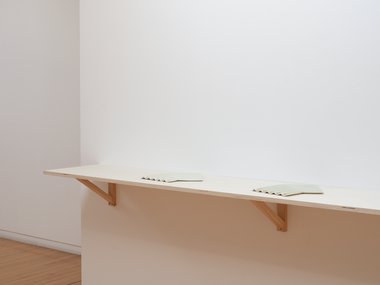
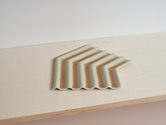
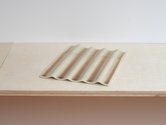
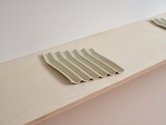


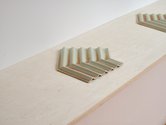
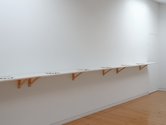

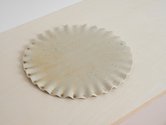
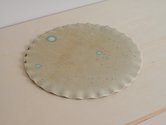
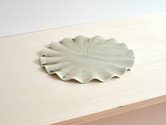
 Two Rooms presents a program of residencies and projects
Two Rooms presents a program of residencies and projects Advertising in this column
Advertising in this column



This Discussion has 0 comments.
Comment
Participate
Register to Participate.
Sign in
Sign in to an existing account.